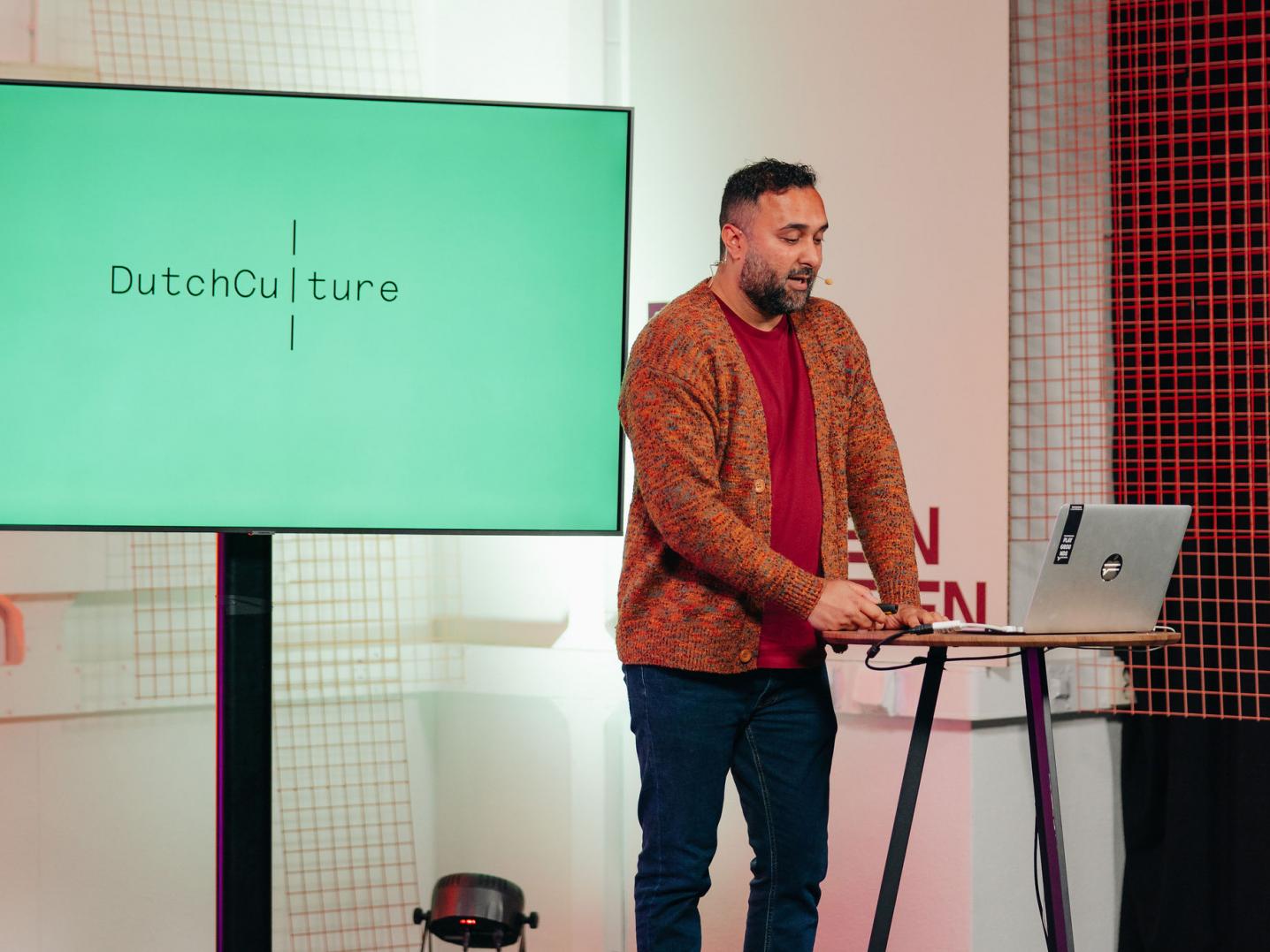We aim to contribute to significant societal goals such as international collaboration, artistic development, and the positioning of the Dutch arts and cultural sector abroad. These are genuine impact objectives: bringing about change in the audience and society. By measuring that impact, you can see what you achieve and learn where improvements can be made. It also aids in external accountability, for instance, towards funders and the political sphere.
In this article, originally published by DEN (Digital Heritage Netherlands), our communications advisor Vinod Singh explains how we go about it.
Asking questions
By determining in advance what you want to know and measure, as well as identifying the audience you want to reach, you can formulate questions. The answers become the data that you can use for measurement. Before starting to measure impact, it is crucial to have insight into the factors that lead to impact.
We survey the 'inputs' we have, including factors such as time, money, and, as our communication advisor Vinod Singh puts it, "in the cultural sector, blood, sweat, and tears." In addition to 'inputs,' there are the actual activities, and we carefully define factors such as the theme and target audience of an activity. "As DutchCulture, we constantly ask ourselves: are we doing the right things? Are we doing things in the right way, and what is our added value for our target audience?"
Once the activity has taken place, Singh looks at the 'outputs.' This is the moment when measurement begins. Outputs include data such as reach figures and information for which you need to survey your audience about their appreciation for the activity.
Effects
We collect these data using Cigarbox, a tool specialized in making, managing, and increasing the societal impact of projects transparent. The data are input into a theory of change, or change strategy, a model that illustrates how the activity leads to the change you envision. In the self-study module Measuring Impact from the DEN Academy, you can learn how to do so.
Many organizations keep statistics about their visitors and conduct customer satisfaction surveys. We go further by linking the data around the output to our objectives. Then we ask ourselves the question: what does our audience do with our output, and does it contribute to our objectives? These are direct effects, about which the audience is surveyed after an activity.

Long-term Impact
However, whether we truly contribute to the significant impact goals we have in mind can only be measured over an extended period. Singh: “Impact measurement is tracking or re-engaging with your audience, with the question of whether they have done something with the outcome." To interpret that, he uses all the information, including from the earlier steps. Over time, these insights lead to refining activities to make more impact.
DutchCulture’s Tips for Impact Measurement
- Start small and keep it simple
- Initially, apply impact measurement to a specific project or first identify a factor to investigate
- Involve impact measurement from the beginning
- Unlike retrospective evaluation, it's crucial to start with impact measurement right from the beginning of a project. Only then can you determine the changes you are making
- Impact measurement involves your entire organization
- The most significant insights are obtained by collectively considering impact and discussing insights with the entire organization


